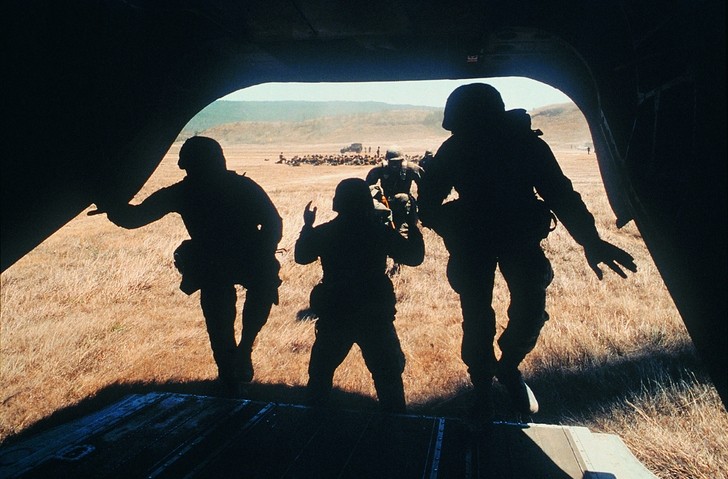New ISSN position paper gives nutritional guidance for warfighters, first responders

The new paper was published recently by the International Society of Sports Nutrition in its own journal. It was the work of a number of researchers associated with the group, some of whom have taken part in events sponsored by NutraIngredients-USA, including Dr Richard Kreider, PhD, of Texas A&M University and Dr Chad Kerksick, PhD, of Lindenwood University.
The paper makes clear that much of the nutritional and hydration recommendations are the result of extrapolations from data gathered outside of actual combat scenarios. For obvious reasons, data from actual military operations is hard to come by, but there are other sources that offer reasonable facsimiles, the authors said. This means extrapolations of the deficits suffered by warfighters and the interventions that can help close these gaps can be made with reasonable confidence.
Data from US Army Rangers
One of the sources of data cited in the paper was a report done on US Army Rangers who were participating in the qualification school for this elite corps. The report found the troops suffered a deficit of about 3,000 calories a day during the training, and exhibited “decrements in muscular strength and power following severe weight loss among participants.” In addition, the troops experienced severe sleep deficits, on the order of less than 4 hours of sleep in a 72-hour period.
In addition, the loads warfighters are expected to carry have increased in the past 20 years, with more protective equipment such as body armor, ballistic helmets as well as chest rings and load bearing vests. These loads now typically range from 31 kg to 44 kg (68 lbs to 97 lbs). As such, the daily caloric requirement for troops during operational tempo periods can top 4,000 calories/day.
Maintaining focus
It has long been recognized that chief among operational concerns is helping troops to maintain mental focus and stave off fatigue that could lead to lethal mistakes. During WW2 German troops were supplied with Pervitin, a methamphetamine product that had been developed in the late 1930s. The Allies responded by supplying benzedrine to troops.
For ethical, legal and health reasons those are no longer options for modern militaries. In lieu of pharmaceutical stimulants, the ISSN paper recommends offering troops caffeine, something that is already codified in Army regulations.
Caffeine has been shown to improve marksmanship, improve reaction times and reduce premature errors. The paper suggests that dosages above 200 mg/day could be useful, but warns that higher doses are associated with some adverse effects, such as increased aggressive behavior and/or sleep disturbances.
The paper also recommends supplementation with creatine monohydrate. This provides well demonstrated ergogenic effects, such as improves recovery and mitigation of damage to muscle tissue after challenging stressful bouts of exercise. But it also could have cognitive benefits, the authors said, by increasing the levels of creatine in the brain.
“This explains some of the published outcomes supporting creatine’s ability to provide neuroprotection from traumatic brain injuries and even potential function in a prophylactic manner in terms of symptom reduction,” the authors said. To achieve these neuroprotective benefits, dosages of 10 g to 20 g a day for up to two weeks may be needed, the paper stats.
The paper also contains recommendations for omega-3 supplementation, both for its muscular benefits as well as the possibility that it may help ameliorate the effects of traumatic brain injuries. Other recommendations are offered for protein, l-tyrosine and beta alanine supplementation.
Even less specific research for first responders
The paper also includes sections detailing nutritional recommendations for first responders such as law enforcement officers and firefighters, though the authors caution there is even less specific data for these activities than there is for warfighters.
“Currently, most of the available recommendations are derived from both general and athletic populations, and further research is needed to best understand the specific health and performance needs of these populations. While performance optimization is important, focused efforts must first be made to establish a pattern of physical activity and dietary intake that reduces the risk for cardiometabolic disease and increases fitness. As more data emerge, specific guidelines surrounding various dietary patterns and dietary supplement use will be generated, and while warfighters, firefighters, and law enforcement personnel all fall under the single term ‘tactical athlete,' the focus of provisions and timing may significantly differ across occupations and designations,” the authors concluded.
Source: Journal of the International Society of Sports Nutrition
https://doi.org/10.1080/15502783.2022.2086017
International society of sports nutrition position stand: tactical athlete nutrition
Authors: Gonzalez DE, et. al.
















